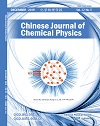
CHINESE JOURNAL OF CHEMICAL PHYSICS
Scope & Guideline
Bridging Theory and Practice in Chemical Physics
Introduction
Aims and Scopes
- Molecular Spectroscopy:
Research in this area includes various spectroscopic techniques such as UV, IR, and Raman spectroscopy to study molecular interactions, dynamics, and structures. - Computational Chemistry:
The journal features studies employing computational methods including density functional theory (DFT) and molecular dynamics simulations to predict molecular behavior and properties. - Nanomaterials and Nanotechnology:
This includes research on the synthesis, characterization, and application of nanomaterials, particularly in catalysis and photonics. - Photochemistry and Photophysics:
Investigations into light-induced chemical reactions and the dynamics of excited states, including studies on energy transfer and charge separation. - Catalysis and Reaction Mechanisms:
Studies focused on understanding catalytic processes, including heterogeneous and homogeneous catalysis, and the mechanisms underlying chemical reactions. - Interfacial Chemistry:
Research exploring the properties and behaviors of molecules at interfaces, including interactions in colloidal systems and surface chemistry. - Machine Learning in Chemistry:
The integration of machine learning techniques to predict molecular properties, optimize reaction conditions, and accelerate materials discovery.
Trending and Emerging
- Ultrafast Spectroscopy:
Research utilizing ultrafast techniques to study chemical reactions and energy transfer processes is on the rise, reflecting a growing interest in real-time observation of molecular dynamics. - Machine Learning Applications:
The application of machine learning in predicting molecular properties and optimizing chemical processes is increasingly popular, showcasing the integration of AI with traditional chemical research. - Green Chemistry and Sustainability:
There is a marked increase in studies focused on sustainable practices, including environmentally friendly synthesis and catalytic processes that minimize waste. - Advanced Nanomaterials:
Research into the synthesis and application of advanced nanomaterials, particularly in energy conversion and storage, is rapidly expanding, driven by the need for innovative materials. - Quantum Computing in Chemistry:
Emerging studies are beginning to explore the intersection of quantum computing and chemical physics, indicating a trend towards leveraging advanced computational methods for complex chemical systems. - Interdisciplinary Approaches:
The integration of chemical physics with other scientific disciplines, such as biology and materials science, is increasingly evident, reflecting a holistic approach to solving complex problems.
Declining or Waning
- Traditional Organic Synthesis:
Research focusing on classical organic synthesis methods is less prevalent, possibly overshadowed by advances in greener and more efficient synthetic methodologies. - Classical Thermodynamics Studies:
There is a noticeable decline in papers solely dedicated to traditional thermodynamic studies as more emphasis is placed on molecular dynamics and statistical mechanics. - Biophysical Chemistry:
Although still relevant, research specifically categorized under biophysical chemistry seems to be receiving less attention compared to other interdisciplinary approaches involving machine learning and nanotechnology. - Static Theoretical Models:
The journal has seen a decrease in publications relying solely on static models, as dynamic and computational studies gain more traction. - Simple Spectroscopic Techniques:
While advanced spectroscopic techniques are thriving, simpler or traditional methods are being used less frequently in favor of more sophisticated approaches that provide deeper insights.
Similar Journals
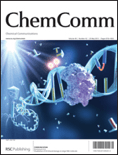
CHEMICAL COMMUNICATIONS
Exploring the chemistry of tomorrow, today.Chemical Communications, published by the esteemed Royal Society of Chemistry, is a prominent journal within the field of chemical science, focusing on the dissemination of cutting-edge research in a variety of sub-disciplines including catalysis, materials chemistry, and electronic materials. Operating without an open access model, this journal provides critical insights from contributors around the globe, enhancing our understanding of complex chemical interactions and innovative applications. Ranked in the top quartile for several categories such as Ceramics and Composites, and Metals and Alloys, Chemical Communications boasts impressive Scopus rankings, securing strong positions across multiple fields and showcasing its influence within the scientific community. The journal is committed to advancing knowledge and fostering collaboration among researchers, professionals, and students, making it an invaluable resource for those looking to stay abreast of the latest advancements in chemistry and materials science. With a publication history dating back to 1965 and continuing into 2024, its rich archive serves as a vital repository of chemical research and development.

Results in Chemistry
Exploring the Depths of Interdisciplinary ChemistryResults in Chemistry is a prominent journal published by Elsevier, dedicated to fostering innovation and disseminating cutting-edge research in the field of chemistry. With an ISSN of 2211-7156, this open-access journal has been committed to making scientific knowledge widely available since 2019, aligning with the global trend towards accessibility in research. Based in the Netherlands, it features interdisciplinary studies that span the breadth of general chemistry, contributing significantly to the academic dialogue within the scientific community. Despite currently holding a Q3 ranking in the miscellaneous category of chemistry and occupying the 228th position out of 408 in Scopus rankings, the journal is poised for growth, aiming to enhance its impact and visibility. Researchers, professionals, and students alike will find invaluable resources and insights within its pages, making Results in Chemistry an essential platform for those looking to stay abreast of advancements and trends in chemistry research up to the year 2024.
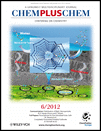
ChemPlusChem
Advancing Chemistry Through Collaboration and InnovationChemPlusChem is a premier journal published by WILEY-V C H VERLAG GMBH, dedicated to the vibrant field of chemistry. With an ISSN of 2192-6506 and an impressive Q1 ranking in Scopus's 2023 category for miscellaneous chemistry, this journal serves as a significant platform for the dissemination of high-quality research and innovative findings. Since its inception in 2012, ChemPlusChem has fostered interdisciplinary collaborations, encapsulating a wide array of topics within chemistry that facilitate scientific advancement and education. The journal features a robust open access system, enabling extensive visibility for authors while providing easy-to-access resources for researchers, professionals, and students globally. Located in Weinheim, Germany, ChemPlusChem reflects international standards and ambitions, striving to enrich the global scientific community through rigorous research and engaging scientific discourse.
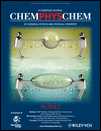
CHEMPHYSCHEM
Delving Deep into the Dynamics of Atomic and Molecular PhenomenaCHEMPHYSCHEM, published by WILEY-V C H VERLAG GMBH in Germany, stands as a pivotal resource for researchers and professionals in the fields of Atomic and Molecular Physics, as well as Physical and Theoretical Chemistry. With a commendable impact across its converged years from 2000 to 2024, the journal is categorized in the second quartile (Q2) for both aforementioned fields according to the 2023 metrics, underscoring its significance in advancing scientific dialogue and research. CHEMPHYSCHEM is committed to disseminating high-quality, peer-reviewed research articles that delve into the intricate interplay between chemistry and physics, making it an essential read for students and experts alike. The journal does not currently offer open access options, allowing for focused scholarly discussions that cater to the academic community's needs. As reflected in its Scopus rankings, CHEMPHYSCHEM maintains respectable standings, ranking #84/224 and #90/189 in its respective categories, demonstrating its commitment to high-impact research and innovation.

DOKLADY PHYSICAL CHEMISTRY
Connecting Researchers in the Dynamic Field of ChemistryDOKLADY PHYSICAL CHEMISTRY is a prominent peer-reviewed journal published by MAIK NAUKA/INTERPERIODICA/SPRINGER, focusing on advancements and research in the field of Physical and Theoretical Chemistry. With the ISSN 0012-5016 and E-ISSN 1608-3121, this journal serves as a vital platform for researchers and practitioners to disseminate their findings and insights from 1996 to the present. Despite its current Q4 ranking in the 2023 category of Physical and Theoretical Chemistry, the journal has shown significant potential for visibility and engagement within the academic community, ranking #149 out of 189 in its respective field according to Scopus metrics, highlighting its dedicated readership. While the journal is not open access, it remains an essential resource for those seeking in-depth research articles, reviews, and commentary within this dynamic discipline. As the field continues to evolve, DOKLADY PHYSICAL CHEMISTRY plays a crucial role in fostering scientific dialogue and collaboration among researchers, professionals, and students worldwide.
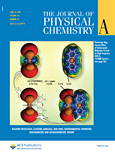
JOURNAL OF PHYSICAL CHEMISTRY A
Advancing the frontiers of molecular understanding.Journal of Physical Chemistry A, published by the American Chemical Society, serves as a leading platform for disseminating high-quality research in the fields of physical and theoretical chemistry. With an ISSN of 1089-5639 and E-ISSN of 1520-5215, this journal maintains a rigorous standard, demonstrated by its position in the Q2 category for both physical and theoretical chemistry as well as miscellaneous medicine within its 2023 category quartiles. As part of the greater ACS network, it operates with a solid Scopus rank of 76/189, placing it within the 60th percentile, emphasizing its credibility and impact in the chemistry community. The journal's objective is to enhance the understanding of molecular phenomena through innovative experimental and computational approaches, making it essential reading for researchers, professionals, and students seeking to advance their knowledge and contribute to scientific discussion. With additional open access options, the Journal of Physical Chemistry A continues to foster collaboration and the sharing of ideas in the vibrant scientific landscape of the United States and beyond.

Computational and Theoretical Chemistry
Unlocking Molecular Mysteries Through Theoretical FrameworksComputational and Theoretical Chemistry, published by ELSEVIER, stands at the forefront of interdisciplinary research in the realms of computational chemistry, theoretical physics, and biochemistry. With its ISSN 2210-271X and E-ISSN 1872-7999, the journal has established a significant presence in the academic community since its inception. Covering innovative computational methodologies and theoretical advancements, it addresses critical issues in condensed matter physics and molecular biochemistry, providing a rich resource for scholars and industry professionals alike. The journal enjoys a respectable impact factor and ranks notably in several Scopus categories, making it a vital platform for disseminating high-quality research. It adopts an open-access model, facilitating wider readership and engagement, which is essential for fostering collaborative innovations in the scientific landscape. As it continues to evolve from 2011 to 2024, Computational and Theoretical Chemistry is committed to advancing knowledge and promoting insightful discussions within the scientific community.
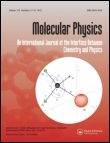
MOLECULAR PHYSICS
Pioneering research in biophysics and beyond.MOLECULAR PHYSICS, published by Taylor & Francis Ltd, is a distinguished international journal that has been advancing the fields of biophysics, condensed matter physics, molecular biology, and physical and theoretical chemistry since its inception in 1958. With an ISSN of 0026-8976 and an E-ISSN of 1362-3028, the journal provides a rich platform for the dissemination of high-quality research, evidenced by its Q3 ranking in several domains including both biophysics and condensed matter physics as of 2023. Although the journal operates on a traditional subscription model rather than an Open Access basis, its rigorous selection process ensures the publication of relevant and impactful articles. The journal's continued convergence of research until 2024 underlines its ongoing significance and adaptability in an ever-evolving scientific landscape. For researchers, professionals, and students alike, MOLECULAR PHYSICS serves as an essential resource for keeping abreast of the latest developments, fostering collaboration, and inspiring future advancements in molecular theory and applications.

Physical Chemistry Research
Empowering global access to pioneering physical chemistry findings.Physical Chemistry Research, published by the Iranian Chemical Society, is an esteemed academic journal dedicated to advancing knowledge within the fields of *Fluid Flow and Transfer Processes*, *Physical and Theoretical Chemistry*, and *Statistical and Nonlinear Physics*. Since its inception in 2013, the journal has established a crucial platform for researchers, professionals, and students to share innovative findings and methodologies, enhancing collaboration and knowledge dissemination in the physical chemistry community. With impactful contributions recognized in Quartile 3 and Quartile 4 classifications across various categories, the journal is positioned to cultivate emerging research trends as it continues to converge through 2024. Researchers can benefit from diverse perspectives on crucial phenomena in physical chemistry, as the journal is indexed in prominent databases, further increasing accessibility and visibility. The *open access* policy ensures that cutting-edge research remains available to a broad audience, promoting the growth of the discipline globally.
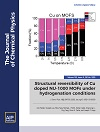
JOURNAL OF CHEMICAL PHYSICS
Advancing the Frontiers of Chemical PhysicsJOURNAL OF CHEMICAL PHYSICS, published by AIP Publishing, stands as a premier scholarly source within the realms of physical and theoretical chemistry, as well as physics and astronomy. With an enduring history dating back to 1933 and converging until 2024, this journal has established itself as a cornerstone of the scientific community, evidenced by its prestigious Q1 categorization in multiple fields, including medicine and general physics. It is ranked 37th out of 243 in the general physics and astronomy category and holds a commendable 39th position in physical and theoretical chemistry according to Scopus rankings, highlighting its significant impact in these disciplines. Although not an open-access journal, it caters to a wide audience of researchers, professionals, and students seeking to deepen their understanding of the interactions and dynamics of chemical systems. With its expertly curated content, the JOURNAL OF CHEMICAL PHYSICS continues to play a vital role in advancing knowledge and fostering innovation across its core subjects.